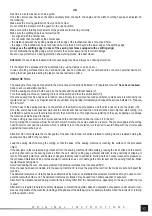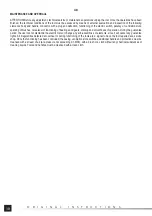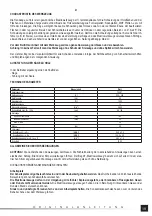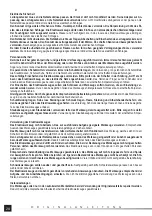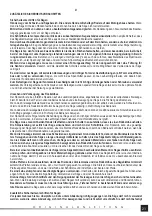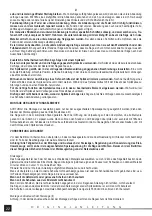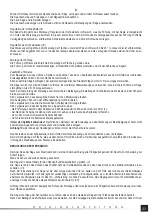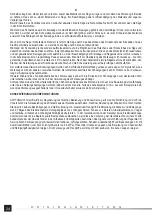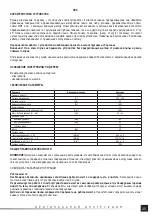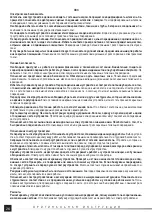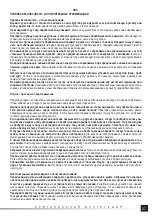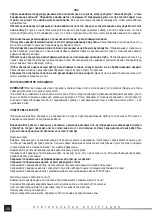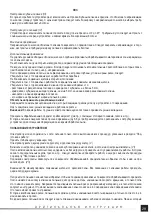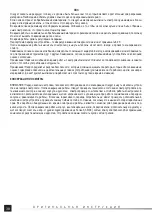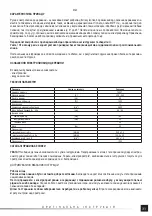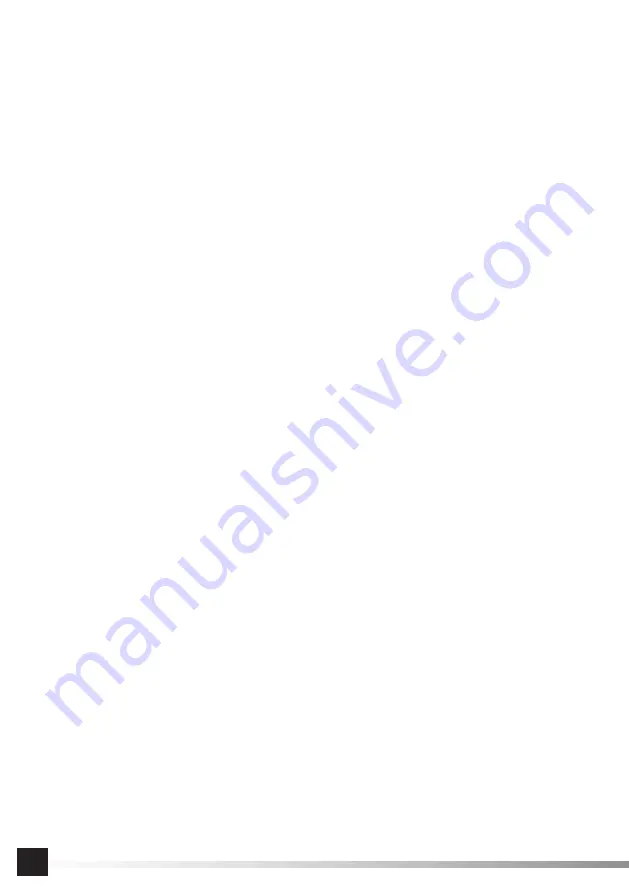
16
GB
O R I G I N A L I N S T R U C T I O N S
In order to function correctly, the splitting edge must be introduced into the element being processed.
The splitting edge
is useless in prevention of backward recoil during short cuts.
Do not operate the sawing machine, if the splitting edge is bent.
Even slight bends may slower the closing of the guard.
INSTALLATION OF THE EQUIPMENT
ATTENTION!
The equipment may be installed only if the power supply if off .
Remove the plug of the cable the tool from the
mains socket!
The sawing machine is supplied complete. Once the package has been opened, make sure all the elements have been supplied.
Then check the connections and if necessary tighten the bolt connecting the base to the fi xed guard and tighten the tighten bolts
fi xing the splitting edge, if the sawing machine is equipped with a wedge. Before fi rst use, install the circular saw.
PREPARATION FOR WORK
Before work may commence, make sure the body and the power supply cable with plug are not damaged. In case any damage
is detected, it is prohibited to continue work.
Attention!
All activities related to installation and replacement of the circular saws, adjustments and maintenance of the
electric tool must be realised when the sawing machine is not powered, so before such tasks: Remove the plug of the
cord of the sawing machine from the mains socket!
Circular saw
Make sure the installed disc is not damaged, the cutting teeth are not broken, etc. In case any damage is detected, it is required
to replace the circular saw with a new one.
Do not use damaged or deformed circular saws!
Do not use circular saws made of high-speed steel!
Do not use abrasive discs!
Do not use discs which do not comply with the technical parameters indicated in this manual!
Do not use saws, whose body is thicker or whose set is smaller than the thickness of the splitting edge!
Do not use discs whose maximum acceptable rotational velocity is lower than 5500 rpm.
Select a circular saw designed for cutting of the given material. The more teeth hast the saw circular saw, the smoother the edges
of the saw cut will be. Saws with dozens of teeth are better suited for cutting of thinner materials, whose thickness is below 1 cm
and for soft wood.
Attention! Do not cut other materials than those indicated in the manual.
Installation and replacement of the circular saw (II)
Attention. During replacement or installation of the saw, it is prohibited to dismantle the guards of the saw!
Use a wrench to block the fi xing disc of the circular saw and unscrew the bolt using another wrench.
Remove the fi xing disc and the circular saw of the spindle of the sawing machine.
Install a new saw on the spindle.
Install the fi xing disc, tighten the bolt, using the wrenches designed to install the saw.
Adjustments of the cutting depth (III)
If required, the tool permits adjustments of the cutting depth, which is facilitated by the scaled guide (located at the back of the
tool). In order to do so, it is required to unscrew the lock located on the scaled guide, set the required cutting depth and lock the
bolt.
Adjustments of the cutting angle (IV)
The tool permits cutting of planes at an angle between 0 and 45
O
. Set the required angle on the scale located at the front of the
tool and tighten the locking bolt.
Installation of the guide
The scaled guide facilitates cutting of surfaces along a straight line. The guide must be fi xed in the base, and then set the required
cutting width and tighten the locking bolt.
Additional remarks
Do not use your hands to remove debris, slivers and other parts of the processed material from the surroundings of a rotating
circular saw.
Do not use the sawing machine in exteriors during rain and other precipitations.
Do not guide the sawing machine just with your hands. Always use additional instruments, which permit to guide the sawing
















